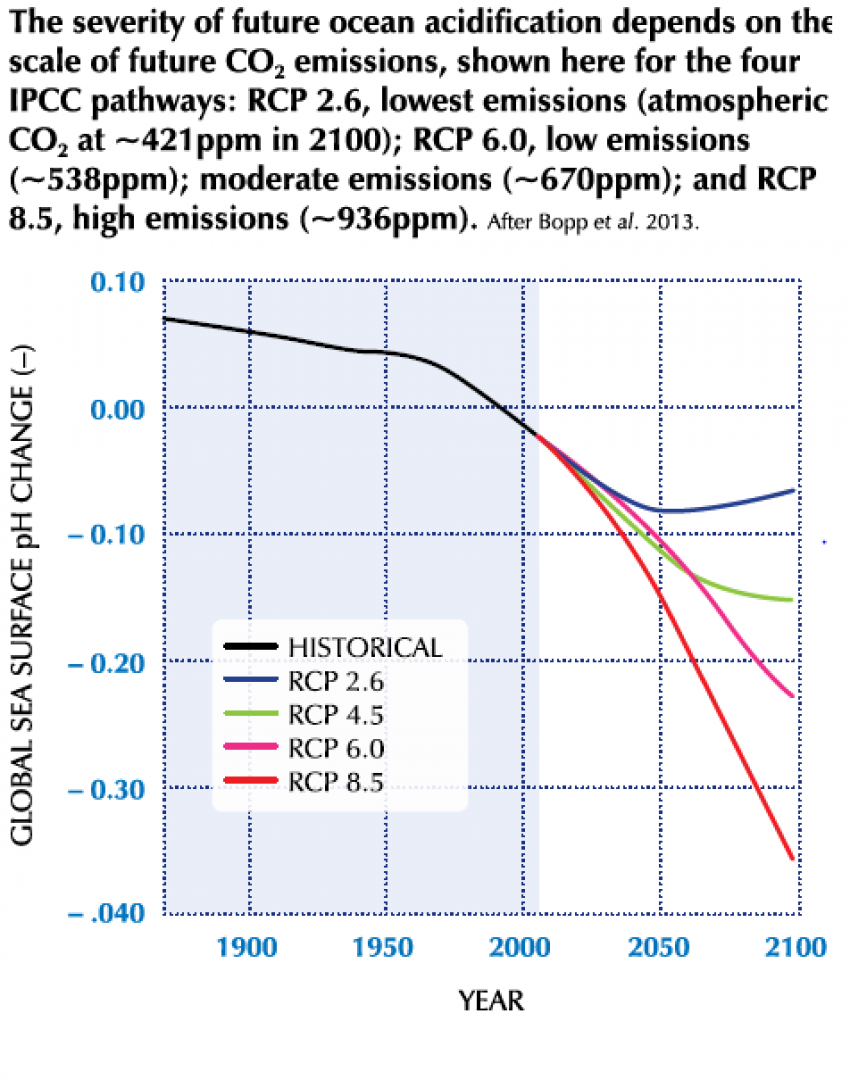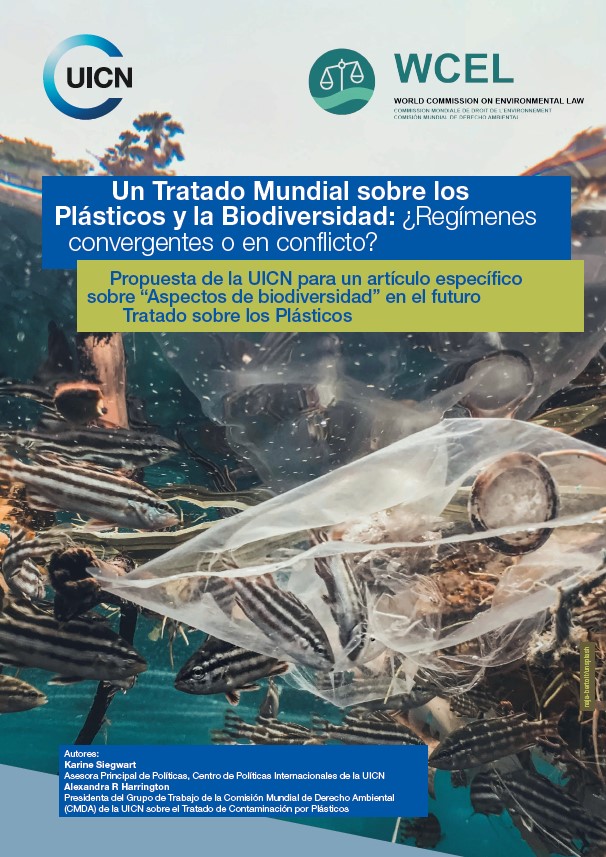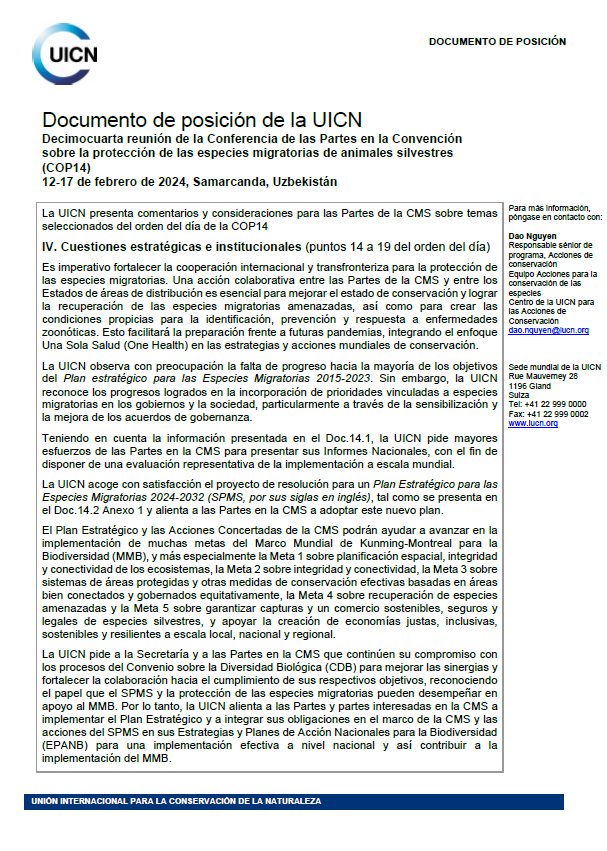Ocean acidification has the potential to change marine ecosystems and impact many ocean-related benefits to society such as coastal protection or provision of food and income. Although more knowledge on the impacts of ocean acidification on marine life is needed, changes in many ecosystems and the services they provide to society can be extrapolated from current understanding. Some of the strongest evidence of the potential effects of ocean acidification on marine ecosystems stems from experiments on calcifying organisms.
Increased sea water acidity has been demonstrated to affect the formation and dissolution of calcium carbonate shells and skeletons in a range of marine species, including corals, molluscs such as oysters and mussels, and many phytoplankton and zooplankton species that form the base of marine food webs.
Changes in species growth and reproduction, as well as structural and functional alterations in ecosystems, will threaten food security, harm fishing industries and decrease natural shoreline protection. They will also increase the risk of inundation and erosion in low-lying areas, thereby hampering climate change adaptation and disaster risk reduction efforts.
Increased ocean temperatures are likely to have direct effects on the physiology of marine organisms and influence the geographical distribution of species. Some species such as reef-forming corals, already living at their upper tolerance level, will have more difficulties ‘moving’ fast enough to new areas. Drastic changes in ocean temperature can also lead to coral bleaching events, where corals expel the symbiotic algae living in their tissues, causing them to turn completely white. The role of coral reefs in buffering coastal communities from storm waves and erosion, and in supporting income generation (fisheries and tourism) for local communities and commercial businesses, is jeopardised. The potential recovery of such bleaching events is hampered due to the declining calcification rates on reefs caused by ocean acidification.







